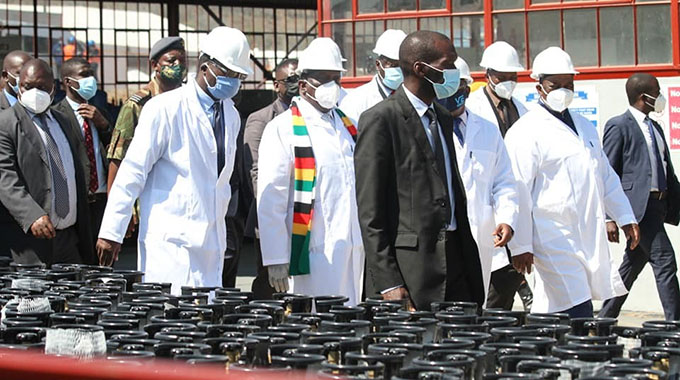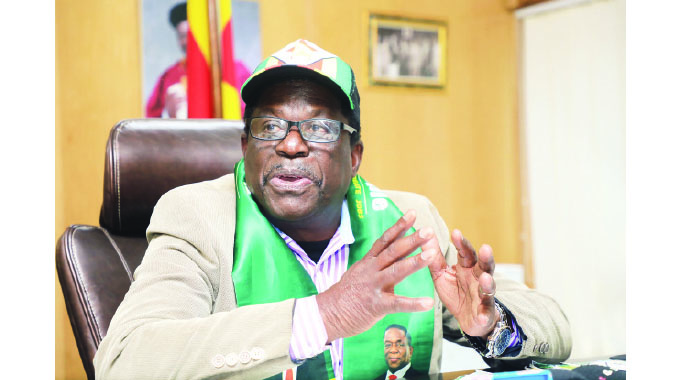Editorial Comment: Oxygen plant example of the new future

The commissioning of the plant near Mutare yesterday that supplies medical oxygen and industrial gases was not just a critical addition to Zimbabwe’s industrial base, but an example of the sort of applied technology done by Zimbabweans that the country needs to grow.
This is what President Mnangagwa stressed at the official commissioning ceremony yesterday. Yes the Government provided the critical institutional and financial support, but the plant was designed, built and is operated by Zimbabwean engineers and technicians.
Even the institutional arrangements show the new thinking. Although it belongs to a State-owned company, Verify Engineering, that is a convenience to reflect the share ownership and the need for a business structure.
Verify comes under the Harare Institute of Technology, which has been developing as the most commercially-minded of the higher education institutions.
Admittedly technology and engineering have to be practical. As someone once said, if it is not practical it is not engineering. But this latest venture is only the latest in a long line of practical applications that Harare Institute of Technology has been involved in as it leads the pack in working out how to create those seamless chains of research, teaching and practical application.
It is the seamlessness of the process that is so critical, getting rid of the silo mentality of having academics in their towers and business people in their factories and never the two working together, or even being the same person.
This stress on moving across the spectrum is no doubt the principle reason why the operational ministry for the new project is the Ministry of Higher and Tertiary Education, Innovation, Science and Technology Development, rather than say the Ministry of Industry and Commerce.
The process of setting up the operational unit involved more than just buying some off-the-shelf equipment from a catalogue and opening a factory.
The idea is not new. It was mooted right back in 2005, but no one was ready to put up the money and perhaps at that stage there were or would be other problems, such as the lack of the seamless interface between theory and practice and, to be blunt, the rather bad record of State-owned businesses and the way they were staffed.
The Second Republic has also been putting theory into practice at policy level. The idea of using local experts in the higher education sector as the innovators and resource persons is no longer something that people pay lip service to.
It is something that has to be done as a matter of course.
And obviously the Second Republic, which is busy fixing the State-owned enterprises that have given so many problems, has taken the necessary steps to ensure that a new one, life Verify, starts off on the right foot from the beginning.
The Finance Ministry might not expect dividends, but that would be only because it is willing to allow Verify to reinvest its profits. The idea of creating and commissioning a non-viable enterprise or allowing it to be badly run would not even be considered at this point in Zimbabwe’s history.
There are those who are dubious about Government intervention in the business world. Well sometimes it is required if there are no private investors willing to step into what is seen as a critical component of the business growth. And sometimes examples have to be given and created.
Many Zimbabwean companies need, at one stage or another, access to high-end research, or advice on how to convert an established technology to Zimbabwean conditions, or simply someone who can work on and solve a particularly messy production problem.
The tendency has been to “hire a consultant”, always from outside the country, often at vast expense and then spend a great deal of time and money in trying to get that consultant to understand just exactly what sort of solution is required in the particular Zimbabwean context.
Yet much of the required expertise is on tap. We would see many of our universities and colleges building a role as technology consultants, and even signing formal contracts with a private company to sort out a problem or tailor a technology.
This is not to say that the company’s own staff might be incompetent, but that several strands of research need to be put together.
One minor example, many years ago, was at a car assembly plant. The paint work sometimes was dubious and it did not appear to be an engineering problem. Someone had the sense to approach the University of Zimbabwe.
Chemists had a look first, and reckoned it was a foreign body and then one bright scientist went further and after bringing in a botanist confirmed it was a miniature grain of pollen. The tree was identified and replaced. It needed a little bit of work by three scientists, which only a higher education institute is likely to have.
Zimbabwe’s development in all sectors needs the application of well-educated people to practical problem solving and development, not so much writing fancy papers for publication, but going into the teal world, finding out what is required and then figuring out a solution that can be implemented by practical people.
President Mnangagwa by backing this Mutare oxygen plant was not just filling a hole in Zimbabwe’s supply chains and creating some new jobs, important as that is. His push at the beginning, and remember this sort of decision needs the okay of the person running the Government, is also showing that Zimbabwe and Zimbabweans can climb out of inherited ways of thinking and embrace a new way of doing things, a better way.










Comments